

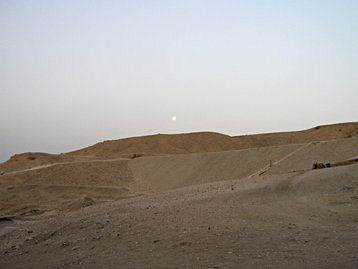 |
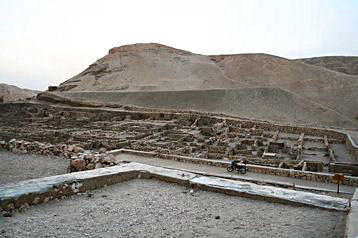 |
| At 6:15, the moon is still visible | Ruins of artisans' housing |
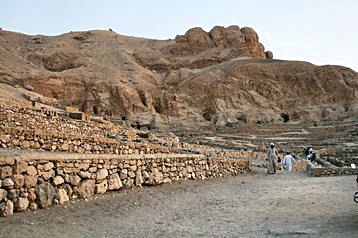 |
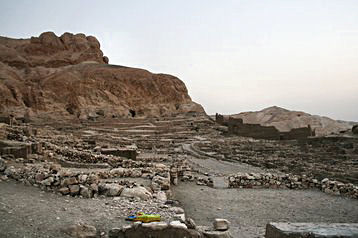 |
| Landscape | In back on the right, the darker ptolemaic temple |
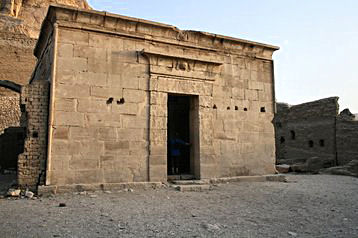 |
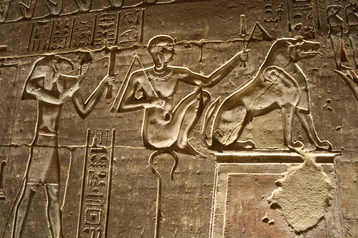 |
| The chapel within the ptolemaic temple of Hathor |
Bas-reliefs in the temple of Hathor |
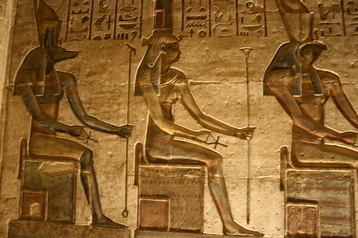 |
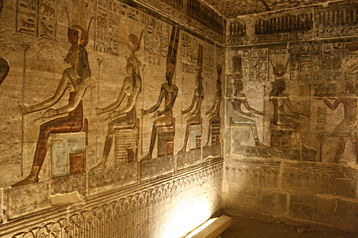 |
| Bas-reliefs in the temple of Hathor | |
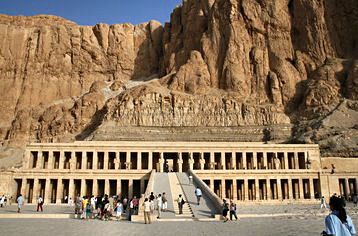 |
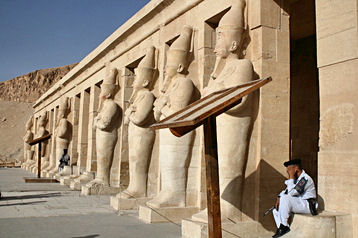 |
| The Temple of Hatshepsut | The "music stands" give shade for the guards |
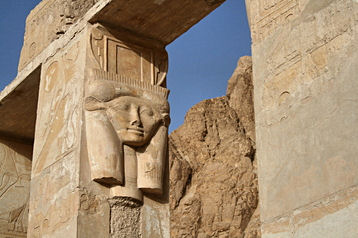 |
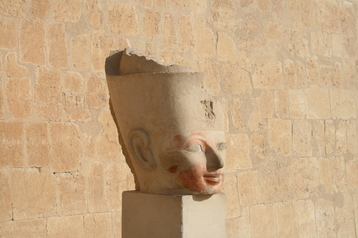 |
| Relief of the goddess Hathor, with cow ears | Head of Queen Hatshepsut |
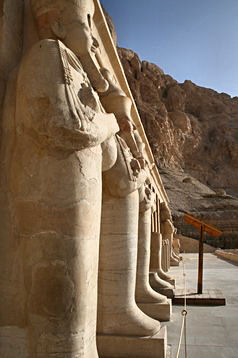 |
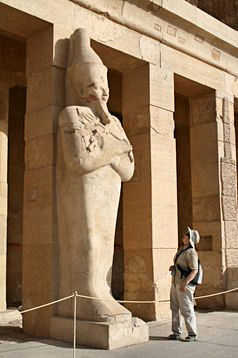 |
| Statues with tourist | |
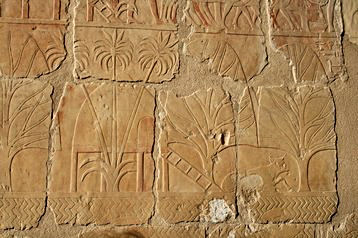 |
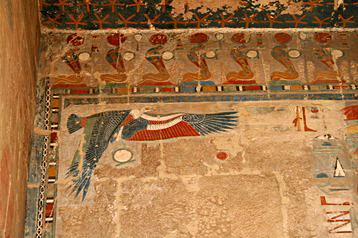 |
| Relief of Nubian villages with palm trees | Colored reliefs |
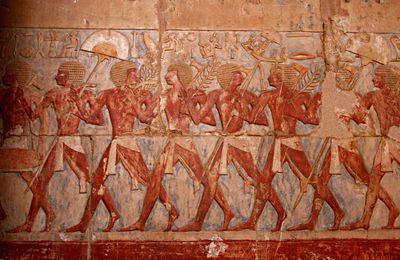 |
| Could these be part of the expedition that Hatshepsut sent to Nubia? |
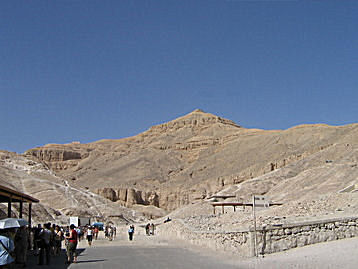 |
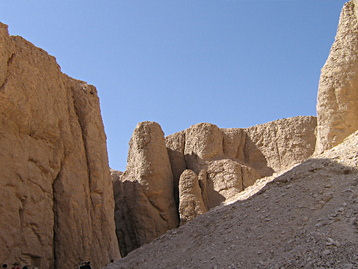 |
| The Valley of the Kings, with its natural pyramid | The entrance to the tomb of Thutmosis III is hidden half-way up the cliff |
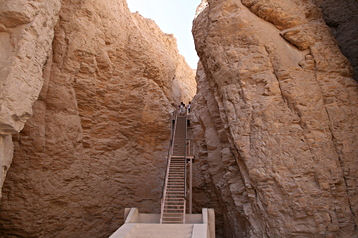 |
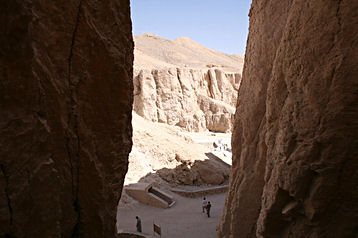 |
| Staircase to the tomb of Thutmosis III | The valley seen from the entrance to the tomb of Thutmosis III |
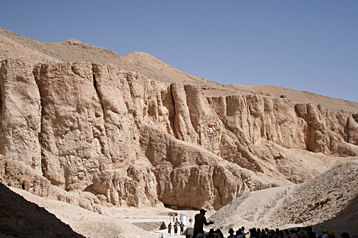 |
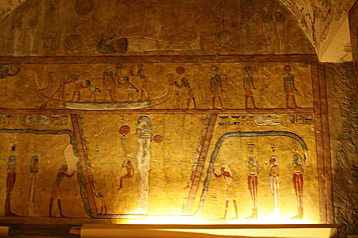 |
| The valley | Oops. I think this was chez Taousert and Sethnakht |
